Tulum in Quintana Roo
09 de Octubre 2015
Tulum is located in the classic period of Mayan history and is known as the "city of the three walls" or "city of walls". Although its best word in context is Zama, "Place or City of Dawn".
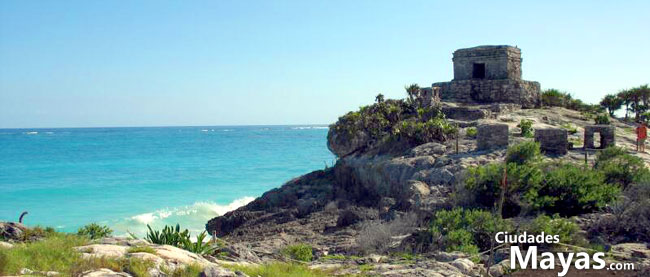
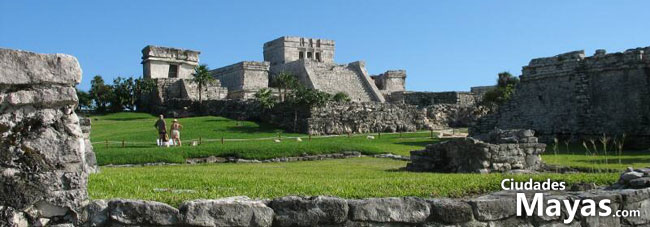
The name : Tulum
Tulum means wall, and refers to its defensive walls. Traces suggest the category "Zama" as "City of Dawn"a more appropriate name, which by its location near the beach also boasts of its meaning.Its discovery is found around 1841 by two explorers, John Stephens and Frederick Catherwood who make mention of the city in the publication "Incidents of Travel in Yucatan" and made numerous drawings of other Mayan cities.
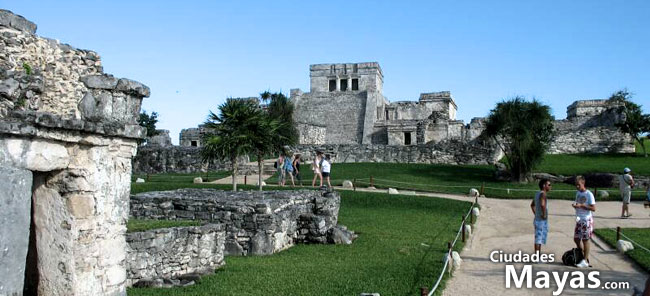
The finding of the city is also stated by Juan de Grijalva in his expedition of 1518, from the coast one could see the buildings from afar but not approached, because of the hostile natural rock barrier.
The city played an important role in trade and tragically seen its population depleted by disease infected by the colonizers. It was abandoned because of their weakened social structure. However, access continued to Mayan religious rituals until modern times.
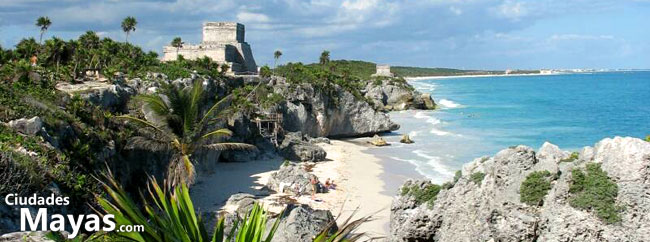
Cultural Conflict
Maya cities are important for their sacred role and religious ceremonies throughout the region, visited by descendants to perform ceremonies themselves, however Tulum is perhaps the best example of conflict with the modern age that pushes aside the sacred rituals.The incomparable beauty of Tulum on the edge of the beach, is almost unreal, heavenly, and thus has attracted the attention of mass tourism. This competition has had almost irreversible damage on the practice of religious rituals at the site.

Architectural Characteristics
Its buildings are of stone blocks, stacked symmetrically. The palace is the most attractive structure for its location, height and panoramic view. There are clear indications of the influence of Chichen Itza in its columns and halls, and Maya-Toltec influence on the pillars. Multiple views reveal irregular angles, showing an architecture that was waning.
All cities and settlements of the Mayan define their location in order to have defensive advantages in case of attack. Tulum is no exception, even to be on the seashore.
Defensive Walls
| Three walls protect the city and the sea is the closure of the fort as a natural difficulty in case of conflict. The size of the walls are 450 meters from north to south and 150 meters from east to west. The complex is almost a letter E, taking into account the wall and cluster architecture in its center. On the right, the sea. |
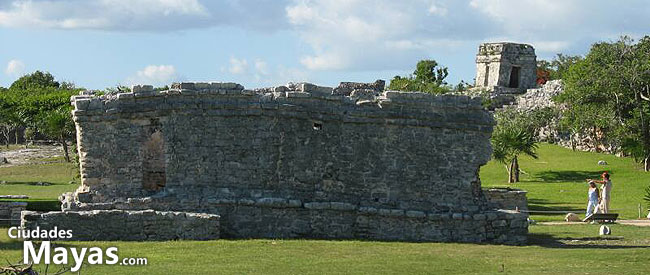
Richness from the close waters
The soil in these northern cities do not have the advantage of abundant materials such as obsidian tools, or abundance of jade as in the Motagua River basin in Guatemala, but they have not found any evidence pertaining to the region that proves how widespread trade, transactions and social relations were between Mayan cities and how they traveled.

Location of Tulum
It is located in Quintana Roo, Mexico, on the coast of the Yucatan Peninsula. Tulums archaeological site is a great mixture of tourist paradise and without a doubt for many reasons it has become more an attraction for its beauty, than for its historical significance. It has been surrounded by an evident growth in hotel infrastructure in the vicinity.How to get to Tulum
From Cancun drive toward the south to Chetumal on the Riviera Maya. The highway signs will indicate the junction leading to the archaeological site.Publicaciones relacionadas:
- Izapa, ciudad maya en el Estado de Chiapas
- Museo de la Cultura Maya en Chetumal
- Kohunlich y sus mascarones
- Chichen Itzá maravilla del mundo
- Labná in the Yucatán
- Kinichkakmoo en Izamal
- Mayapán
- Tulum en Quintana Roo
- Uxmal en Yucatán
- Chicanná
- Mayapán maya city
- El Rey sitio arqueológico en Cancún
- Kabáh en Yucatán
- Sayil en Yucatán
- Ek Balam el Jaguar Negro
- Xlapak
- Cobá maya ruins
- Palenque zona arqueológica
- Xlapak ruins
- Tulum in Quintana Roo
Lee más publicaciones de:
Arqueología México
